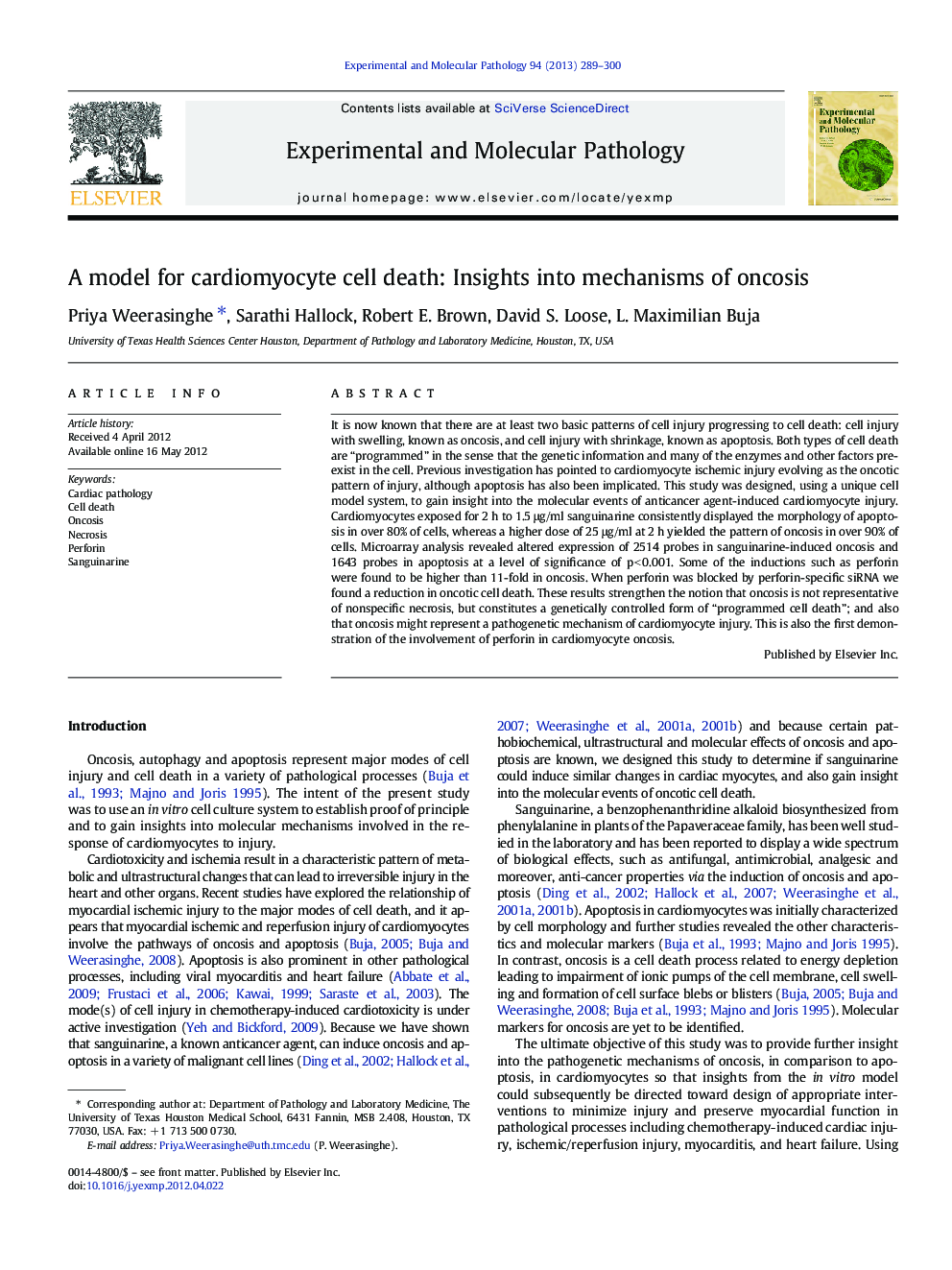| Article ID | Journal | Published Year | Pages | File Type |
|---|---|---|---|---|
| 5888309 | Experimental and Molecular Pathology | 2013 | 12 Pages |
It is now known that there are at least two basic patterns of cell injury progressing to cell death: cell injury with swelling, known as oncosis, and cell injury with shrinkage, known as apoptosis. Both types of cell death are “programmed” in the sense that the genetic information and many of the enzymes and other factors pre-exist in the cell. Previous investigation has pointed to cardiomyocyte ischemic injury evolving as the oncotic pattern of injury, although apoptosis has also been implicated. This study was designed, using a unique cell model system, to gain insight into the molecular events of anticancer agent-induced cardiomyocyte injury. Cardiomyocytes exposed for 2 h to 1.5 μg/ml sanguinarine consistently displayed the morphology of apoptosis in over 80% of cells, whereas a higher dose of 25 μg/ml at 2 h yielded the pattern of oncosis in over 90% of cells. Microarray analysis revealed altered expression of 2514 probes in sanguinarine-induced oncosis and 1643 probes in apoptosis at a level of significance of p < 0.001. Some of the inductions such as perforin were found to be higher than 11-fold in oncosis. When perforin was blocked by perforin-specific siRNA we found a reduction in oncotic cell death. These results strengthen the notion that oncosis is not representative of nonspecific necrosis, but constitutes a genetically controlled form of “programmed cell death”; and also that oncosis might represent a pathogenetic mechanism of cardiomyocyte injury. This is also the first demonstration of the involvement of perforin in cardiomyocyte oncosis.
⺠There are at least two basic patterns of cell injury progressing to cell death: oncosis and apoptosis. ⺠A cell model system was used to gain insight into the molecular events of anticancer agent-induced cardiomyocyte injury. ⺠Cardiomyocytes exposed to sanguinarine- an anticancer agent, consistently displayed the morphology of oncosis and apoptosis in over 80% of cells at a higher and lower concentration, respectively. ⺠Microarray analysis showed perforin levels to be elevated over 11-fold in oncosis. Moreover, when perforin was blocked by perforin-specific siRNA, a reduction in oncotic cell death was observed. ⺠These results strengthen the notion that oncosis is not representative of nonspecific necrosis, but constitutes a genetically controlled form of “programmed cell death”; and also that oncosis might represent a pathogenetic mechanism of cardiomyocyte injury.
